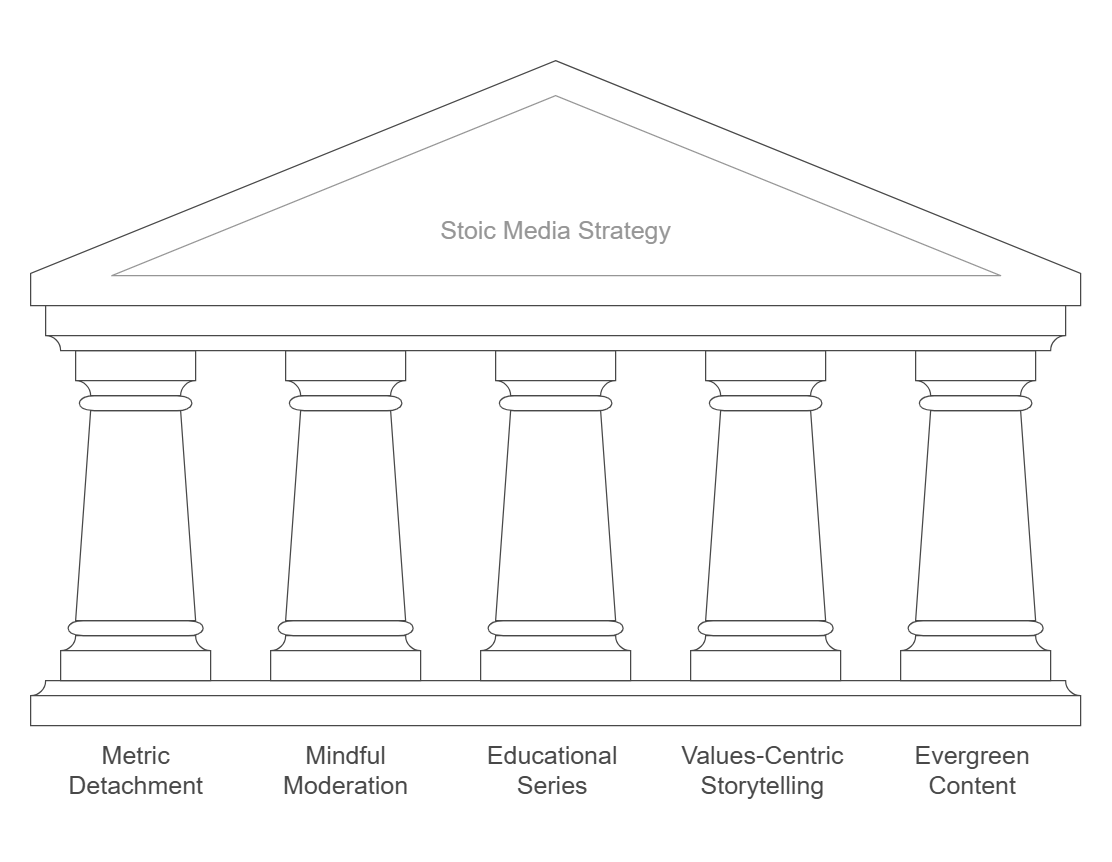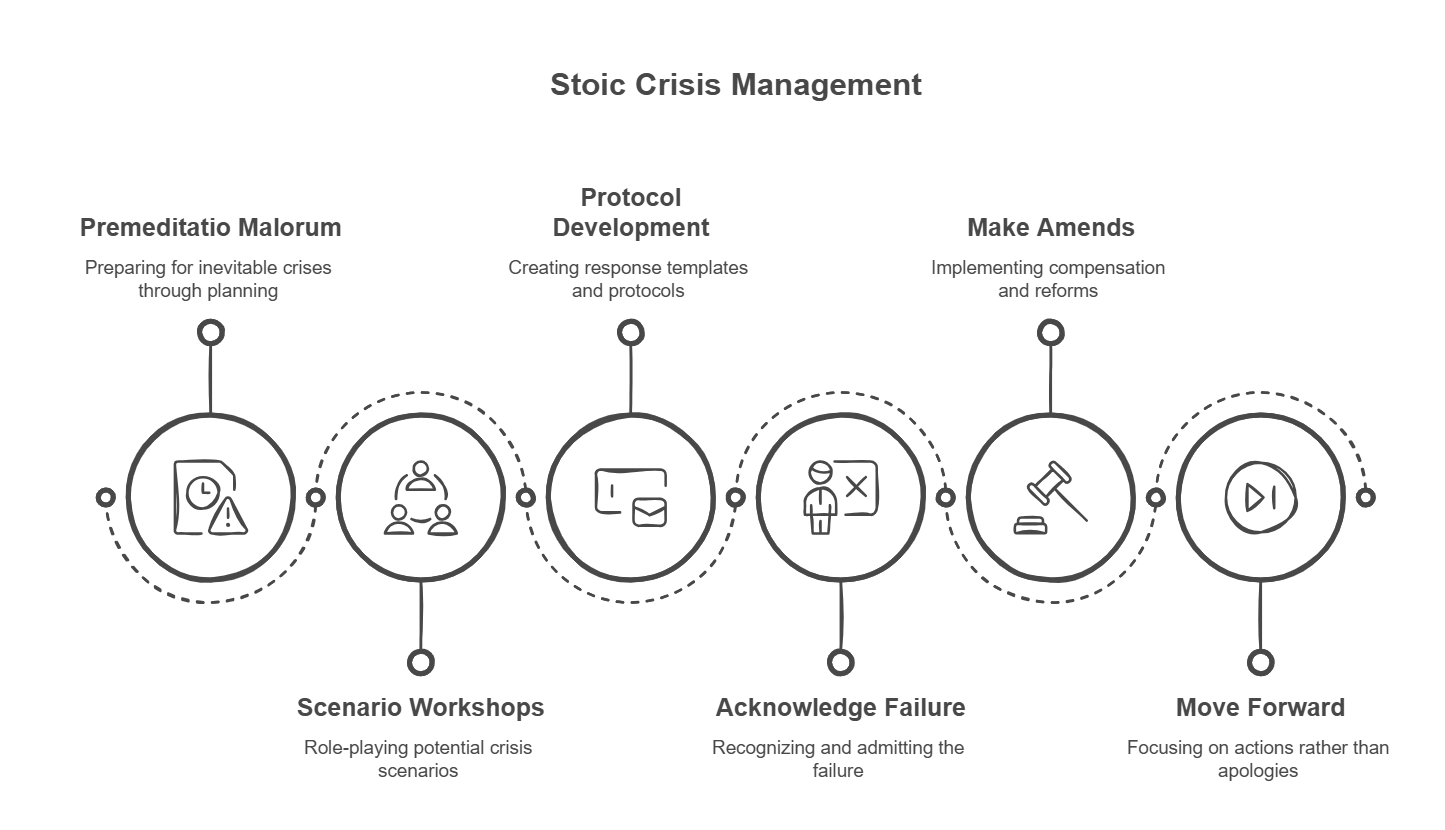In a world where social media thrives on virality, outrage, and fleeting trends, brands often find themselves caught in a cycle of reaction rather than strategy. Enter Stoic Media—a philosophy-driven approach that fuses ancient Stoic principles with modern digital marketing. This strategy doesn’t chase engagement for the sake of it. Instead, it prioritizes reason over reaction, virtue over virality, and long-term brand resilience over short-lived metrics.
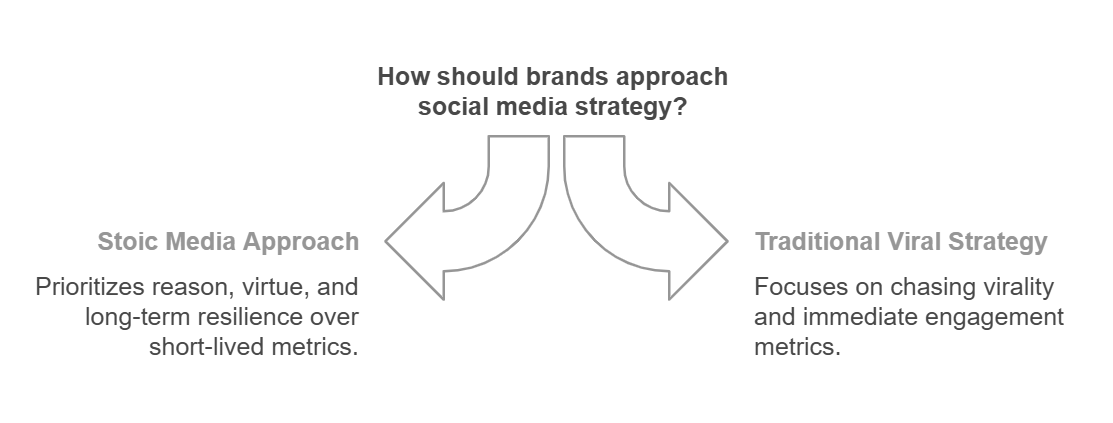
Why Stoicism? Why Now?
Social media today is an algorithmic battlefield. Platforms shift, attention spans shrink, and outrage cycles move faster than ever. But while brands can’t control the chaos, they can control how they navigate it. The Stoic Media framework applies three foundational Stoic principles to digital marketing:
- Focus on Controllables – Craft content and build community, but don’t obsess over algorithm shifts or fluctuating engagement rates.
- Virtue-Driven Authenticity – Root branding in wisdom, courage, and justice rather than performative relatability.
- Amor Fati in Algorithmic Uncertainty – Treat platform changes as opportunities, not setbacks.
Let’s break down what this looks like in action.
Principles in Practice: Stoic Social Media Strategy
1. Focus on Controllables: The Power of Strategic Detachment
Marcus Aurelius said it best: “You have power over your mind—not outside events.” This is the essence of Stoic Media. Instead of chasing trends or gaming engagement metrics, resilient brands own their narrative and focus on what they can control: content quality, audience value, and ethical engagement.
Case in Point: Stoic Media specializes in White Label social-first original content, giving brands ownership while avoiding platform dependency. This approach ensures long-term value instead of fleeting digital relevance.
2. Virtue-Driven Authenticity: A Counterintuitive Edge
Influencer culture thrives on curated personas, but Epictetus warned against “para-social relationships”—an eerily relevant critique of today’s digital landscape. Instead of manufactured relatability, Stoic Media strategies build trust through:
- Wisdom: Educational content that provides real value. (Example: HubSpot Academy’s approach to skill-building.)
- Courage: Brands that take ethical stands. (Example: Patagonia’s unwavering commitment to environmental activism)
- Justice: Fair pricing, transparent policies, and social responsibility. (Example: Ben & Jerry’s racial justice campaigns)
The Lesson? Purpose-driven brands don’t just ride trends—they shape them.
3. Amor Fati: Embracing Algorithmic Change
Algorithm shifts send most brands into a panic. Stoic-led brands, however, treat them as opportunities. When Google’s Privacy Sandbox phased out third-party cookies, proactive brands didn’t resist—they doubled down on first-party data strategies. As Seneca put it: “Anticipate troubles to disarm them.”
Brands that thrive? They don’t fear change. They prepare for it.
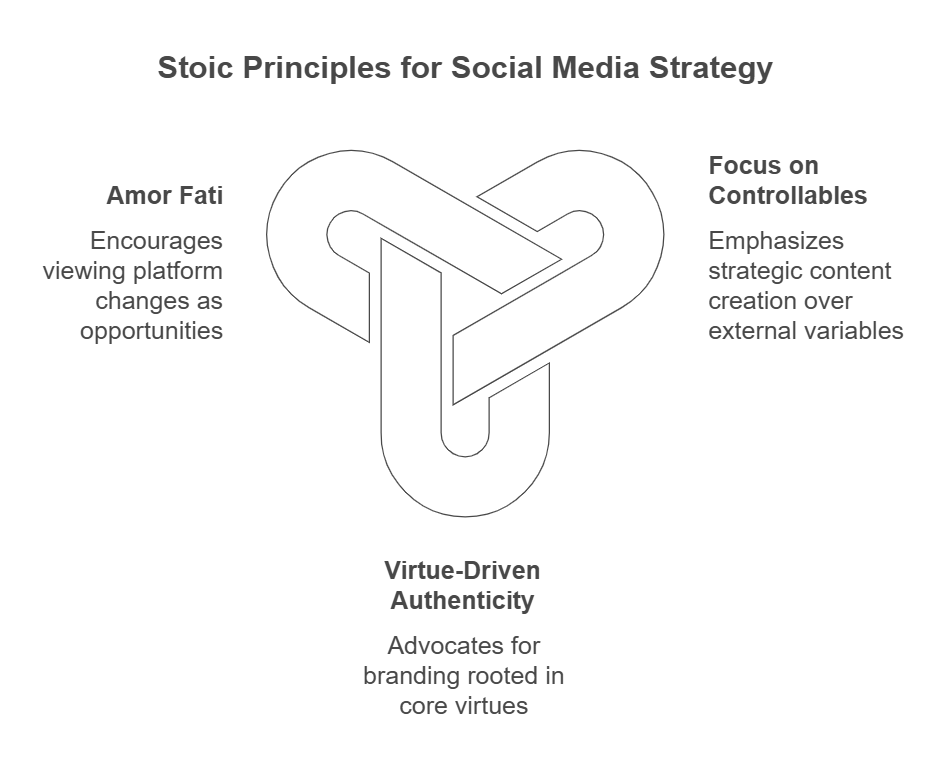
The Stoic Playbook for Social Media Management
Emotional Equilibrium in Engagement
Reddit’s Stoic community offers simple but powerful advice: “Don’t check for comments. Don’t seek validation.” For brands, this means:
- Metric Detachment: Data is diagnostic, not validation. (Example: Salesforce’s Trailhead platform prioritizes education over vanity metrics.)
- Mindful Moderation: Avoid real-time overreactions. (Example: Buffer’s scheduled posting aligns with Epictetus’s “confine yourself to the present.”)
The Challenge?
Too much detachment can come across as tone-deaf. The balance lies in Stoic Media’s “Advertising Through Inspiration” approach—rigorous analysis paired with human storytelling.
Content Strategy: Playing the Long Game in a TikTok World
The trend cycle is a dopamine treadmill. Stoic Media plays a different game—timeless relevance over short-lived hype.
- Educational Series: Teaching as a branding tool. (Example: HubSpot Academy’s structured learning paths.)
- Values-Centric Storytelling: A narrative-driven approach. (Example: Ben & Jerry’s justice campaigns), which embody Seneca’s belief that “a gift lies in the giver’s intention.”)
But don’t mistake Stoicism for stagnation. As StoicSimple warns, “Stoicism isn’t emotional detachment.” The best strategies blend evergreen content with timely relevance—just like Stoic Media’s hybrid model of HTML5 animations and platform-native formats.
Crisis Management: Stoicism in Action
Premeditatio Malorum: Preparing for the Inevitable
Crisis isn’t a question of if—it’s when. Stoic brands practice pre-mortem planning to ensure calm, strategic responses.
- Scenario Workshops: Role-playing potential crises (e.g., PR backlash, executive scandals).
- Protocol Development: Pre-drafted apology templates and escalation matrices, much like Johnson & Johnson’s Tylenol response.
Post-Crisis Stoicism: Respond, Repair, Move Forward
United Airlines’ infamous passenger removal scandal is a case study in Stoic crisis response:
- Acknowledge the failure (“We failed our values.”)
- Make amends (Compensation and policy reforms.)
- Move forward (No endless apologies—just better actions.)
As Aurelius wrote: “The past is ashes.”
Measuring Success: Stoic KPIs Over Vanity Metrics
Forget likes and shares. True Stoic success is measured in:
- Wisdom Index: Educational content completion rates. (Example: Coursera enrollments.)
- Courage Score: Share of voice on bold, brand-relevant topics.
- Justice Metric: Diversity in UGC collaborations.
Case Study: Stoic Media reports an 85% client retention rate over five years—echoing Seneca’s wisdom: “True wealth is time.”
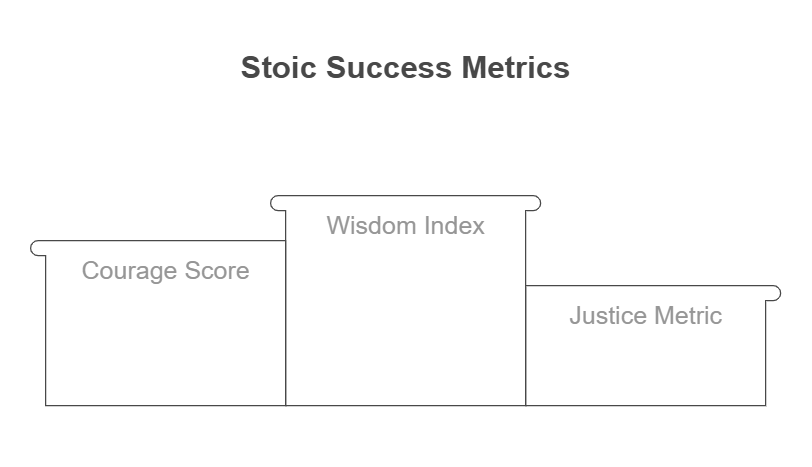
When Stoic Media Wins (and When It Struggles)
Best Fit for Stoic Strategy:
- Regulated Industries – Healthcare, finance, and industries that value calm authority.
- B2B Sectors – LinkedIn thought leadership aligns with Seneca’s “teach, don’t preach” philosophy.
- Crisis-Prone Markets – Airlines, financial services, and other industries where preparedness equals survival.
Where It’s Less Effective:
- Trend-Driven Niches – Fast fashion and meme culture move too fast for Stoic pacing.
- Startup Growth Hacking – Hyper-growth often requires obsessive metric tracking, which conflicts with Stoic detachment.
Final Verdict: Stoicism as a Competitive Edge
For brands tired of the dopamine casino that is social media, Stoic Media offers an alternative: a resilience-building dojo where content strategy is built for legacy, not likes. The brands that thrive in uncertainty are those that control what they can, anticipate what they can’t, and measure success beyond engagement spikes.
As Marcus Aurelius might tweet today: “The soul becomes dyed with the quality of its posts.”
The next frontier? Exploring how AI can scale Stoic content moderation and real-time virtue analytics—because the future of ethical branding isn’t just about what you say, but how you uphold it.

